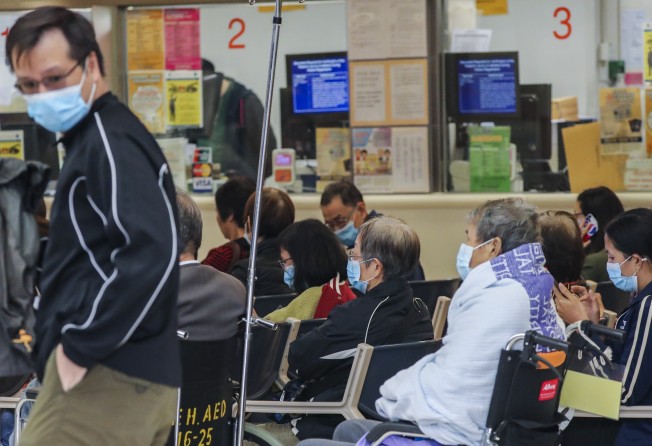
Hong Kong’s public hospitals are struggling with our ageing population, not an influx of mainland migrants
- Like other high-income countries with a low birth rate and a long life expectancy, Hong Kong’s elderly will increase demand for public health services. Meanwhile, the influx of mainland migrants has served to balance out the population’s age curve

While Hong Kong’s overstretched public hospitals have been in the news lately, the burden on the public health-care system and the increasing workload of medical staff has long been the subject of concern. Some have blamed migrants from the mainland for the overcrowding of the hospital system. This is unfortunate and inaccurate.
In fact, like many high-income Asian countries, Hong Kong hospitals are grappling with a rapidly ageing society, which is the result of a prolonged low birth rate and long life expectancy. In addition to increasing demand for hospital services, Hong Kong also faces rising health-care costs. Government expenditure on health care in Hong Kong has been increasing at the alarming rate of 10 to 15 per cent per annum. The Hospital Authority, which is fully funded by the government, provides 90 per cent of the city’s hospital inpatient services.
The unmanageable expansion of health-care costs has become a major public finance issue in many countries. The United States spends about 17 per cent of its gross domestic product on health care, but the country’s health indicators are not particularly impressive, and American life expectancy has been reducing since 2015.
In the United Kingdom, the much acclaimed National Health Service (NHS) is facing serious financial and sustainability problems, which would ultimately lead to deterioration in the quality of hospital care.
Contrary to popular belief, Hong Kong’s population growth has slowed down in the past two decades, with an annual growth rate of only 0.5 per cent compared to 2 to 3 per cent in the ’80s. Moreover, the influx of new migrants has served to slow the ageing of Hong Kong’s population, without the city facing depopulation as Japan has.

The slowing growth of Hong Kong’s population is projected to continue until the 2050s. By then, the population mix will be more balanced and hospital needs might be different. Nevertheless, in the next two decades, Hong Kong can expect high demand for hospitalisation services.
If we use the latest United Nation’s population projection to anticipate Hong Kong’s demand for hospital inpatient services for the next 55 years, the average length of stay per hospital visit for the whole population is expected to increase by 134.4 per cent, while the length of stay for those aged 85 years and above is projected to increase by 555.3 per cent. In 2066, people aged 77 and above will account for around 70 per cent of the projected hospitalisation days.
As age-related demographic changes shift hospital care towards older adults, Hong Kong must provide sufficient training for geriatric health care. However, like many health-care systems around the world, Hong Kong must take steps to reduce the number of days its population spends in hospital if it is to curb rising health-care costs. We need to identify more cost-effective and better-quality hospital services, and make use of technological advancements and better patient management techniques to help reduce hospitalisation days.
Moreover, more efforts should be made to strengthen primary health services that focus on disease prevention and promote health to reduce the demand for hospital services, or our existing system will be unable to cope.
Alternative and innovative measures, such as a community-based care system, should be explored to support the overstretched hospital system. Some hospitals that offer fixed-price packages and are connected to Hong Kong universities, such as Gleneagles, which has the University of Hong Kong as its clinical partner, have recently been set up to help mitigate the burden on the public hospital system. Meanwhile, the government is promoting a voluntary health insurance scheme for the general population.
In the interim, the government also needs to address the issue of manpower in hospitals and the concerns of medical and frontline staff, who face tremendous pressure and long working hours, putting them at increasing risk of burnout. This requires more than just additional funding to retain the workforce but also measures to improve their working conditions so as to increase their job satisfaction and morale while maintaining the highest standard of professionalism.
Paul Yip is a chair professor (population health) at Department of Social Work and Social administration, the University of Hong Kong